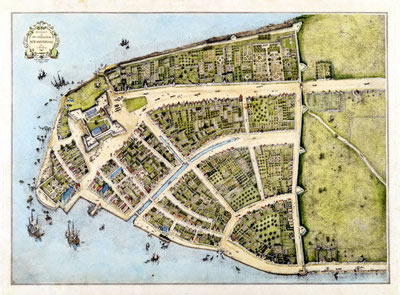Originally Settled by the Dutch
Giovanni de Verrazano first explored the area that is now New York in 1524. The region was next explored by Henry Hudson and Samuel de Champlain in the early 1600's. It was first settled by the Dutch in 1613, who built trading posts along the Hudson River. The Dutch named the colony New Netherland. During the next ten years, Dutch settlers would establish small colonies at Albany and other points along the Hudson River.
The Birth of New Amsterdam
In 1625, Peter Minuit founded New Amsterdam at the outflow of the Hudson River. According to legend, Minuit paid local Indians about $24 worth of trinkets for the land. Who knew that America's largest city, New York City, would develop from the land that Minuet purchased?
The English Take the Region From the Dutch
In the 1630's and 1640's, Puritans from other colonies began moving into New Amsterdam. They quickly gained political and economic influence. The British soon claimed the entire region, citing the explorations of John Cabot as justification. In 1664, a British naval fleet sailed into the harbor of New Amsterdam and forced its surrender. New Netherland was then divided into the colonies of New York and New Amsterdam. The name "New York," after James, Duke of York, replaced New Amsterdam.
New York Colony Articles and Activities
13 Colonies Navigation
Other 13 Colonies Articles


